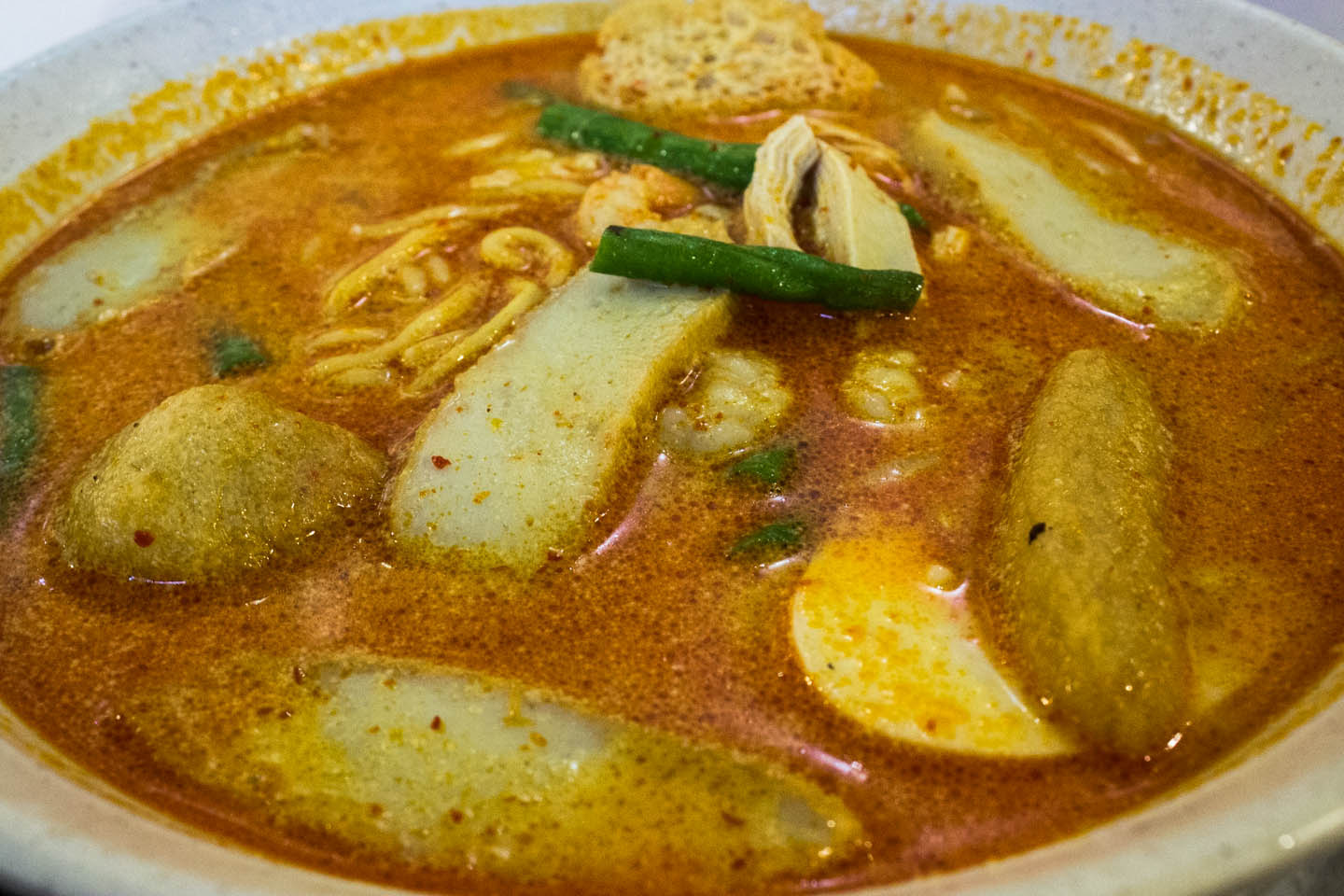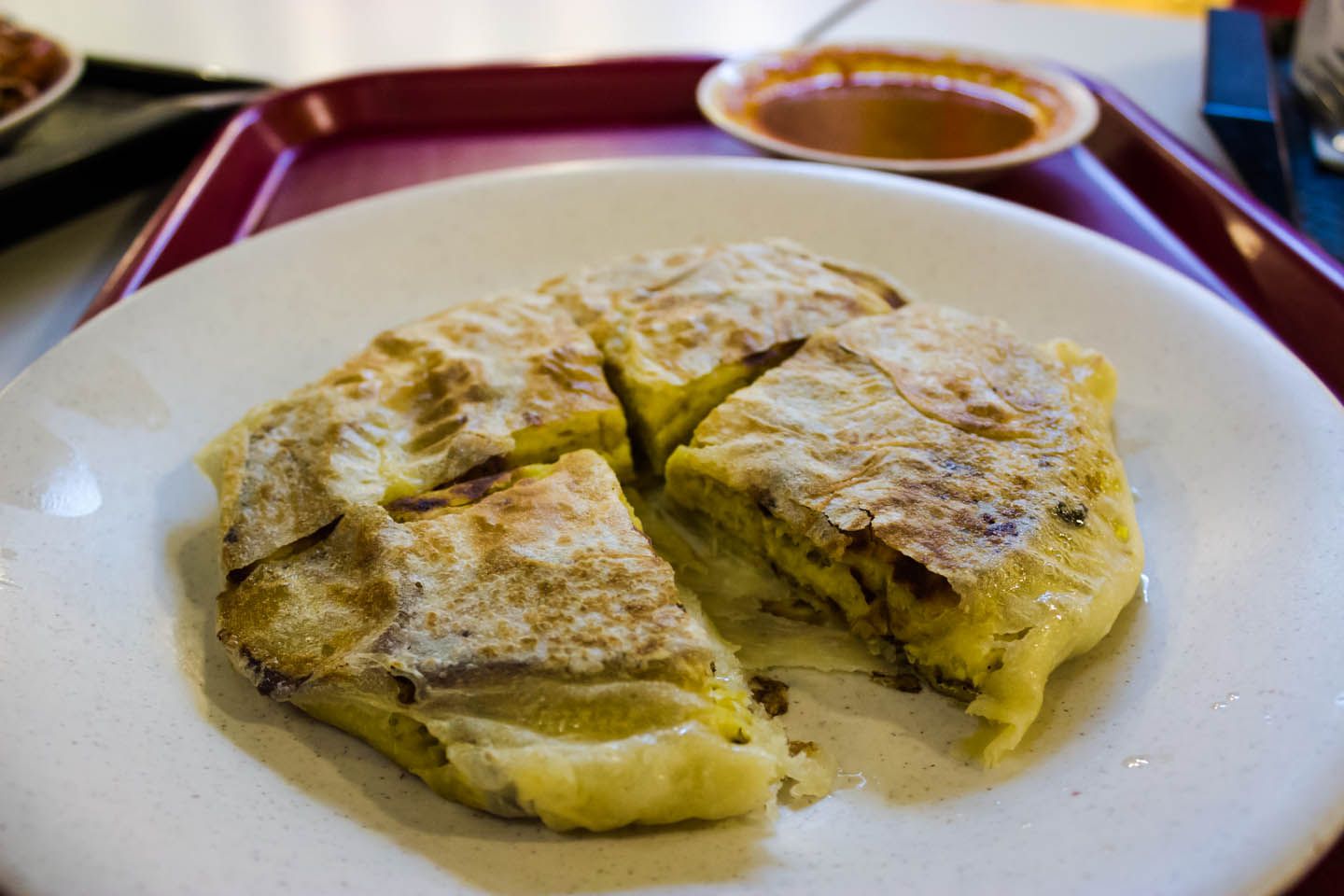Malaysian food is a mix of influences – some Chinese, some Indian, and some traditional Malay, to name the main ones. Some dishes were highly reminiscent of Indonesian food, shared even, such as satay and rendang. Just Penang itself had enough delectable dishes that warranted its own post. A true melange of flavours, it was the perfect way to savour the last tastes of Asia.
Nasi Lemak
Considered the national dish of Malaysia, nasi lemak reminded me most of Indonesian food. Rice cooked in coconut milk, sambal meat, anchovies, peanuts, and an boiled egg. Regardless of its many variations, nasi lemak is a classic rice dish with meat and sides. You can’t go wrong.

Curry Laksa
Laksa is a spicy noodle soup. It is a quintessential Peranakan or Nonya cuisine dish, when early Chinese immigrants to Malaysia blended Chinese ingredients with local ingredients and cooking techniques. Northern regions had more Thai influence with the use of sour ingredients; thus the Assam Laksa in Penang. Southern regions had more Indonesian influence with the use of coconut milk; thus it was more common to find a curry laksa.

This was probably Carlos’ favourite dish in Malaysian food. It was at once spicy and milky; stimulating yet soothing. The soup tasted similar to a diluted Thai coconut curry. Besides thick noodles, the soup typically contains bean curd puffs, fish sticks, shrimps, and clams.

Hokkien Mee
As the name would indicate, this Malaysian food originates from the Chinese province of Hokkien (Fujian). I liked the Kuala Lumpur version of Hokkien mee, where dark soy sauce is used, and the plate looks like a mouth-watering plate of dark fat noodles.

I associate Hokkien mee with the beautiful simplicity of a classic wok stir-fry. It’s nothing fancy, but sometimes the most basic dishes are the best, the ones that stand the test of time.
Roti and Murtabak
Whenever I wanted a bite to eat without having a full meal, rotis were a great snack. Obviously an Indian-influenced food, rotis reminded us of the variety of breads we had in India. Roti canai was always made fresh on the spot, then served with some dhal and curry on the side.

There were also many variations upon the most basic roti with added ingredients, some with eggs, some with cheese. A murtabak was the ultimate roti – with minced meat, eggs and onions. It was surprisingly filling.

Teh Tarik
Considered the national drink of Malaysia, teh tarik was absolutely everywhere – restaurants, kopitiams, streetside stalls. Literally meaning “pulled tea,” teh tarik is a black tea with condensed milk. Being poured back and forth between two cups gives the tea a frothy top.

Teh tarik tasted quite similar to masala tea (chai tea) in India but sweeter and less spicy. I admittedly drank more iced lemon tea than teh tarik, but it was a staple for the locals.
We’re going to miss all the food in Asia so much. The incredible food culture, the huge variety in flavours, the unbeatable prices. I’m sure I will miss every part of this trip at some point, but the food will be the most noticeable at first. Thanks to Malaysian food for one last taste.
